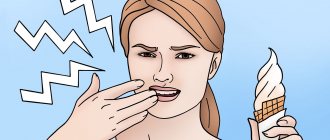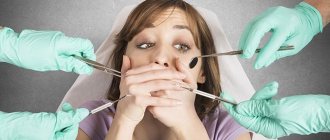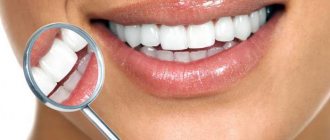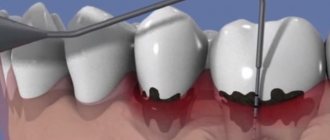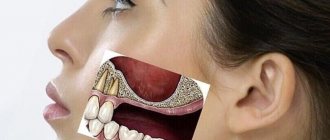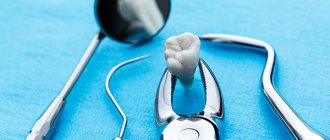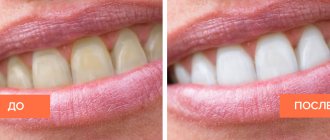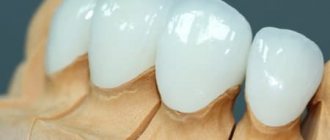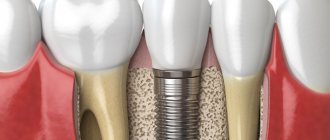Piercing is a procedure in which a puncture is created in the body for wearing jewelry. An open wound takes a long time to heal and requires especially careful care. However, if a person does not properly care for an unhealed puncture, and the technician works poorly and does not care about the sterility of the instruments, this leads to serious complications. To avoid becoming a victim of piercing, you need to familiarize yourself in advance with the likely negative consequences and the reasons for their development.
How long does it take for a piercing to heal and how to understand that complications have arisen
A fresh puncture goes through three stages: inflammatory, active healing and restorative. The duration of each stage depends on the location where the hole is made. For example, a nose piercing takes 1-2.5 months to heal, an eyebrow piercing takes 2-3 months, and a tongue piercing takes 3-4 months. Read more about healing times in our separate article.
The first signs will help you understand that complications have begun to develop in the puncture area:
- too much redness in the puncture area;
- itching;
- pain;
- feeling of heat in the wound area and increased body temperature;
- purulent discharge.
Does the piercing take a long time to heal?
The complete formation of the canal for many punctures takes on average 6-8 months (with the exception of tongue and smile, they heal much faster), but this does not mean that the puncture will hurt throughout this time. If you follow all the recommendations and proper care, the pain goes away after 2-4 weeks.
Why complications arise
The reasons for an unsuccessful puncture, depending on who provoked the complications, can be divided into two groups:
- Complications due to the fault of the master. Masters who work at home without the appropriate certificates and permits often make the procedure unsafe: they do not maintain sterility, do not undergo medical examinations, and pierce incorrectly. As a result, an infection enters the wound, and the instrument damages nerves and blood vessels.
- Complications caused by the client. Often clients are not ready for a long recovery period and do not follow the specialist’s recommendations. The wound requires careful, long-term care over several months, and if the wound is not treated or injured, this leads to infection.
Is there a risk of contracting hepatitis or HIV?
Do not get piercings in questionable places, at home, in a club, etc. The master must work in disposable, clean gloves, and the instruments must be sterile. If you are worried, the technician can remove tools from an autoclave or ultraviolet cabinet in front of you . If all hygiene standards are followed during the procedure, everything will be fine.
Negative consequences after tongue piercing
Tongue piercing most often provokes the following complications:
- speech disorders, lisp;
- severe throbbing pain;
- damage to tooth enamel by decoration, chips and cracks;
- difficulty chewing food;
- atrophy of the taste buds, as a result of which the sense of taste decreases;
- impaired blood supply, anemia.
What piercing is in fashion now?
Previously, piercing was considered an attribute of informals, but with the development of the piercing and body modification industry, this opinion has completely changed. Is piercing fashionable? Of course yes! Manufacturers of piercing jewelry create forms of products that look sophisticated, and everyone can find something that will perfectly highlight their individuality. The most fashionable piercing at the moment is the piercing of the wing of the nose and microdermal. These piercings have not lost their popularity for a long time, and are suitable for absolutely everyone. But the fashionable piercing of 2021 is, perhaps, the helix and conch piercing, which look harmonious in any look.
Consequences of a bad navel piercing
The most common complication after navel piercing is jewelry rejection. Occurs if the body does not accept the jewelry and tries to get rid of it on its own - push it out of the wound.
It may also happen:
- earring failure or wound injury - the abdominal area is constantly in contact with wardrobe items that can easily damage the puncture;
- Stretching the piercing – if the piercing is too small or close to the edge, heavy jewelry can overly enlarge it, and the consequences will have to be corrected in the surgeon’s office;
- Stretch marks (striae) on the abdomen are a common complication that appears during pregnancy in women who have previously had their navel pierced.
Primary piercing jewelry
It often happens that the client’s request is to immediately place a ring in a fresh puncture. But the primary decoration for piercing is a straight labret or barbell (or a microbanana for piercing the navel, eyebrows, ruuk and day), the only exception is the smile piercing, you can immediately put a ring or circular in it. This is explained by the fact that the labret is much more static; it practically does not move inside the puncture, which reduces the risk of mechanical injury. The carving of jewelry also plays an important role; external threads can injure a puncture and collect a lot of dirt, so it is better to give preference to jewelry with internal threads . The material is also very important; jewelry made of surgical steel, jewelry gold or low-grade silver will not allow punctures to heal properly due to the presence of nickel in its alloy, which oxidizes while in the body. Is titanium suitable for a first piercing? Definitely yes, titanium is one of the most hypoallergenic metals at the moment.
Consequences of unsuccessful ear piercing
Earlobe piercing rarely causes complications; problems most often arise when the cartilage is pierced. Cartilaginous tissue takes a long time to heal, painfully, and often rejects the earring and festers. Benign tumors can form on them, which need to be removed surgically. Unsuccessful piercing can lead to drooping ear cartilage, which will have to be corrected with plastic surgery.
There are many nerve endings in the ear area. If they are hit, it can cause facial paralysis. If the piercing procedure is seriously violated, hearing loss may develop.
How does the puncture procedure work?
First of all, the master helps in selecting jewelry. The decoration and all necessary instruments are sent for sterilization. The technician treats the puncture area with an antiseptic and makes markings. A through puncture is made with a special hollow needle. If required, the fresh piercing is sealed. The master gives recommendations for care. The piercing procedure takes on average 30 minutes, which includes preparing the workplace, sterilizing instruments, marking, etc., but the puncture itself takes only a couple of seconds.
How to deal with complications after a piercing
At the first signs of improper healing, you should contact your doctor or consult with a specialist. Timely seeking help will help avoid serious consequences and stop the pathological process.
Before visiting a doctor, you can:
- wipe the area with the decoration with an alcohol solution;
- apply a cotton swab soaked in an antiseptic (for example, Furacilin or Chlorhexidine) to the wound;
- apply a gauze swab lubricated with Levomekol or Tetracycline ointment.
Are there any contraindications for piercing?
There are several main contraindications for piercing: Age. How long can you start getting a piercing? By law, piercings can be done from the age of 16 in the presence of a parent or legal guardian. Pregnancy. In the early and late stages, stress during the piercing procedure can affect the course of pregnancy (during lactation you should also refrain from piercing). Heart disease. Before the procedure, you should definitely consult your doctor. Contraindications to piercing can also include chronic skin diseases, kidney failure, cancer, in which case a consultation with a doctor is required.
How to avoid complications
To ensure healing is as safe as possible, you must adhere to several rules:
- the procedure should be done in a specialized salon;
- check how well the procedure for sterilization and disinfection of instruments is followed;
- make sure that the master has a certificate of completion of training, a license, and a medical book;
- strictly follow the doctor’s recommendations for caring for a fresh wound;
- Avoid going to the sauna, bathhouse, swimming pool, or the beach for 2-3 months after the procedure.
Where to get a piercing? Is it possible to do a piercing at home?
In order to get professional and high-quality piercings, there are tattoo studios and piercing studios. They have all the necessary conditions for high-quality provision of services, and the craftsmen have the necessary experience and qualifications. Is it possible to do a piercing at home? Theoretically, yes, it is possible, but each puncture has its own nuances - the correct angle of the puncture, location, selection of the length of the jewelry, which are very difficult to observe on your own. Moreover, piercing yourself for the first time can be quite scary; in the end, instead of a beautiful and even puncture, you only injure yourself. We advise you not to carry out such experiments, but to contact a piercer . There is also an opinion that such procedures should be performed by a doctor, but, despite medical education, such specialists do not have the appropriate knowledge about piercing, the necessary tools or disposable supplies, as well as suitable jewelry, so medical institutions or beauty salons are not the right place for piercing.
FAQ
- Are there any contraindications to piercing?
Yes, I have. A puncture cannot be done if you have a number of diseases: diabetes, AIDS and HIV infection, viral hepatitis, herpes, mental disorders, epilepsy, oncology. Also, the procedure is not performed during pregnancy or lactation.
- Which area is the most painful to pierce?
It all depends on the individual pain sensitivity threshold. It is believed that the most severe pain is caused by piercing the nipples, ear and nose cartilage. The least painful puncture is in the earlobe.
- What jewelry material does not cause allergies and complications?
For the initial puncture, jewelry made of safe hypoallergenic titanium, medical steel, polytetrafluoroethylamine (PTE/PTFE), bioflex, and acrylic are recommended.
Share link:
Does it hurt to get a piercing?
The pain of the puncture depends on the client’s pain threshold ; for some people, one puncture does not hurt at all, for others it is very unpleasant. But there are punctures that are more painful than others. The most painful piercings are nipple piercings, tragus and medusa . But you shouldn’t be afraid of these punctures; the piercing procedure only takes a couple of seconds. Where doesn't it hurt to get a piercing? The most painless places are conch and helix , but there are still people who find injecting them quite unpleasant. To make the procedure as comfortable and painless for you as possible, we advise you to get a good night's sleep, eat a hearty meal, and before the puncture itself, you can drink tea with something sweet.
What can happen to the puncture site or tattoo?
Skin, designed to protect us from threats from the outside world, remains a very delicate matter. Injuring it during piercing is fraught with the following consequences:
- allergies to metal or tattoo ink components;
- scar formation;
- sepsis (blood poisoning).
The first case is usually detected some time after the procedure. When faced with symptoms of long healing, swelling or suppuration, do not neglect the help of specialists!
Scarring is possible if you do not properly care for the puncture site or if the technician is careless: in an effort to cope with the injury, the connective tissue grows excessively, forming a scar.
It is impossible to miss blood poisoning - it develops rapidly a few hours after the “operation”. A visitor to a beauty salon finds it difficult to breathe, experiences fever, tachycardia, and sees things that are not what they usually see? An emergency call must be made immediately! The rest is up to the doctors.
The risk of infection is always relevant, even if the piercing or tattoo was done in the most expensive salon in the city. And not only because of the dishonesty of its employees: walking around with damaged skin, you can catch an infection - HIV or hepatitis is unlikely, but tetanus and tuberculosis - easily!
Important! Is the newly opened salon inviting visitors with mega discounts? Don’t rush to become its first clients: the establishment can disappear as quickly as it opens. But the infection will not go away on its own.
Rules of asepsis and antisepsis
Puncture of any part of the body must be performed in a salon using a special gun or needle. The procedure is performed by a specially trained master. Piercing on different parts of the face and body can be performed with or without anesthetics. To do this, use gels, creams and sprays based on lidocaine.
After treatment with an anesthetic drug, the site of the future puncture is covered with a film and the required time interval is waited for the drug to take effect.
The procedure is performed very quickly and causes a minimum of pain, acceptable for each area. Before piercing, the surface of the skin is treated with an antiseptic or antibacterial solution. Only disposable needles are used. The package with accessories for performing the procedure must be opened in the presence of the client. Compliance with the rules of asepsis and antisepsis is mandatory, as with any type of surgical intervention.
Read also Intoxication of the body: manifestations of poisoning and treatment
Hygienic care rules
Regardless of what part of the body or face the piercing is located on, in order for the resulting wound to heal as quickly as possible, certain rules must be followed. Punctures heal at different rates. This largely depends on the speed of regeneration of the client’s tissues.
If an infection occurs during the healing process, the process is delayed. Healing may take several weeks to several months. Compliance with basic rules will speed up this process and avoid negative consequences.
- Use only a trusted professional with good reviews. An unscrupulous specialist can not only make your piercing crooked, but also cause severe pain or even leave wounds on your body.
- Use jewelry only from high-quality materials, such as medical steel. In no case should cheap jewelry be used for piercing, as it tends to oxidize and deteriorate during wear. In such cases, inflammation is guaranteed.
- Compliance with hygiene standards when performing procedures in the salon. Disposable needles and septic treatment.
- Compliance with recommendations for treating the puncture site. Bathing is prohibited for 24 hours after the procedure.
- Avoid contact of external contaminants - dust, dirt, oils - at the puncture site. But at the same time, you cannot cover the puncture with a band-aid. Thus, this place will become a favorable environment for the development of anaerobic bacteria.
- If you experience new pain, redness or swelling of the piercing site, you should consult a doctor. These symptoms indicate a bacterial infection.
- The jewelry can be replaced with a new one only after the wound has completely healed. Before use, jewelry is treated with an antibacterial agent.
- Piercing jewelry, like a toothbrush, is a means of individual consumption. When used together, it is possible not only to introduce a bacterial infection, but also to become infected with more serious diseases such as HIV and AIDS.
As in any type of activity, when using jewelry for the face and body, you need to know when to stop. Those who are big fans of wearing iron on their faces very often come across negative attitudes from people around them. People with such predilections are, as a rule, representatives of certain subcultures.
Read also: What to do if an adult has a fever, diarrhea and vomiting
Causes of complications
The main reason for unforeseen situations during the procedure is the penetration of an infectious agent into the wound surface. And if infection occurs, it is accompanied by symptoms indicating intoxication of the body.
Complications often arise in those people who decided to save money and got a puncture done at home or by a specialist without the appropriate permits.
Sterility during piercing can only be maintained in a clinic or stationary beauty salon.
In addition, the master must use only disposable tools and have documents confirming that he does not have dangerous infectious diseases.
An unsuccessful puncture can lead to damage to blood vessels and nerves - another reason for the development of complications. For example, when an eyebrow is pierced, damage to the facial nerves can occur, which, if left untreated, can lead to their paralysis.
Often, the clients of beauty salons themselves are to blame for the fact that a complication has developed after a piercing. They do not adhere to the rules of conduct during the recovery period.
We recommend reading about tongue piercing. You will learn about the types of punctures, jewelry, the pros and cons of a hole in this area, the procedure for performing the procedure, and possible consequences. And here is more information about how the navel is pierced and the possible consequences afterwards.
Cultural significance
The modern world is rapidly changing before our eyes. Today, a tattoo, a pierced tongue or an eyebrow is no longer perceived as a manifestation of a rebellious spirit, as it was before, in the days of our parents, when earrings were only allowed to be worn in the ears, and then only for girls.. Even our society, which is highly conservative, has become It’s normal to treat such decorations. A person who wants to stand out in this way does not experience discomfort in communicating with others, difficulties in getting a job, etc.
Now piercing is considered commonplace, regardless of the gender of its wearer, social status and place of puncture. Therefore, those who want to decorate their body with earrings should not be afraid that this will be negatively perceived by others.

